A Comprehensive Hydroponic Guide to Cultivating the Iconic Eastern Himalayan Chili
This story begins with a serendipitous encounter with a new neighbour. Raj, a tranquil soul from Nepal was sat on his terrace, opposite my house, learning French on Duo-Lingo. We struck up a conversation and it quickly became clear that he was missing his homeland; he lamented the near-impossibility of finding his beloved chilli in our sleepy French village. What were the chances? He has moved nextdoor to me! (A complete chilli nut!)
His tales of fiery pickles, tangy chutneys and delicious dhals made using Dalle Khursani ignited my curiosity. With years of indoor hydroponic experience tucked under my belt, I decided to accept the challenge: to bring the authentic, GI-protected Dalle Khursani to life in my own controlled environment—if, for nothing else, to make Raj feel a bit nearer to home.
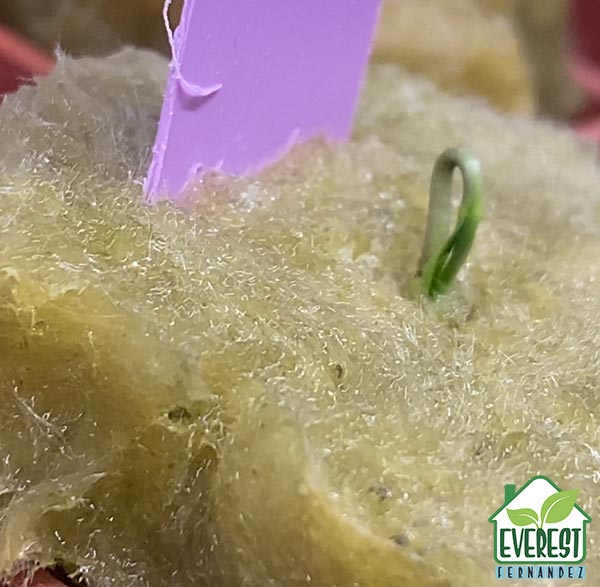
What Exactly is Dalle Khursani?
Origins and Cultural Significance
Deeply cherished across the highlands of Nepal, Bhutan, Sikkim, and even in select pockets of Darjeeling, this little ruby pepper is affectionately known as the ‘round chilli’—a whimsical nod to its unmistakable, rotund form. Commercial ventures in Sikkim during the late ‘90s heralded its arrival on the market, and since then, it has steadily etched its mark on Himalayan culinary traditions—featured in tangy pickles, robust chutneys, and fiery sauces. Thanks to its prized Geographical Indication (GI) status, only those chillies cultivated in its ancestral lands can rightfully be called Dalle Khursani.
A Symphony of Heat and Flavour
The charm of Dalle Khursani lies not only in its impressive kick—ranging from 100,000 to 350,000 Scoville units—but in the artful equilibrium of its flavour profile. As you chew, your mouth is overwhelmed by an immediate, electrifying “zing” that, just as you begin to panic, mercifully mellows into a gentle, almost caressing, far more sophisticated warmth. This unique interplay of sensations makes it a versatile ingredient in the kitchen and a delightful subject for conversation among spice lovers.
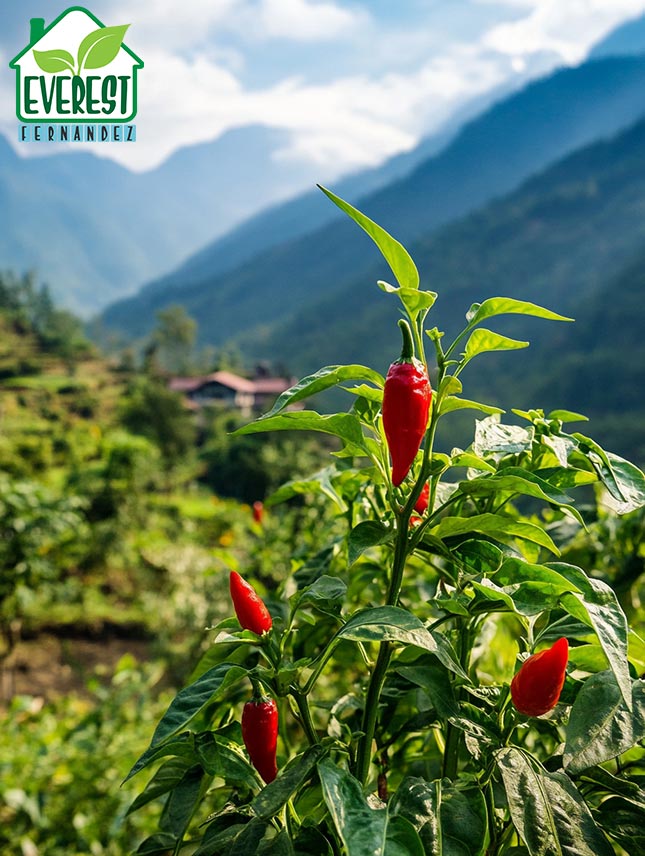
Cultivating Dalle Khursani Hydroponically: Technical Insights
Growing Dalle Khursani indoors demands a meticulous approach. Despite cultivating it so far from its native habitat, I believed that hydroponics and my meticulous approach to replicating environmental conditions, could unlock the true potential of this extraordinary variety.
1. Seed Germination: Laying the Foundation
Patience is paramount. Dalle Khursani seeds might take between 7 and 21 days to germinate under optimal conditions. Here’s how I set the stage for success:
- Growing Medium: I favour Grodan stone wool cubes for their superb moisture retention and natural aeration.
- Pre-soaking: Before sowing, I immerse the cubes in a delicately balanced, pH-corrected nutrient solution. I use reverse osmosis water enriched with CalMag and trace elements to bring the EC to around 0.1 or 0.2 mS and the pH to about 5.5.
- Environmental Setup: Keep the air temperature comfortably between 25–30°C (77–86°F) and maintain a high humidity level of roughly 80–90% using a propagator with a humidity dome.
- Lighting: Provide soft, full-spectrum LED lighting at approximately 150–200 µmol/m²/s PPFD to ensure gentle yet effective illumination.
2. Transplanting and Early Growth
Once the seedlings are demanding one or even two dips into feed solution per day, it’s time to transplant them into larger Grodan HUGO 6” grow blocks. I like to wait until they are really screaming out to be transplanted, so they transition seamlessly into their larger stage grow blocks. At this stage, careful adjustment to new conditions is key:
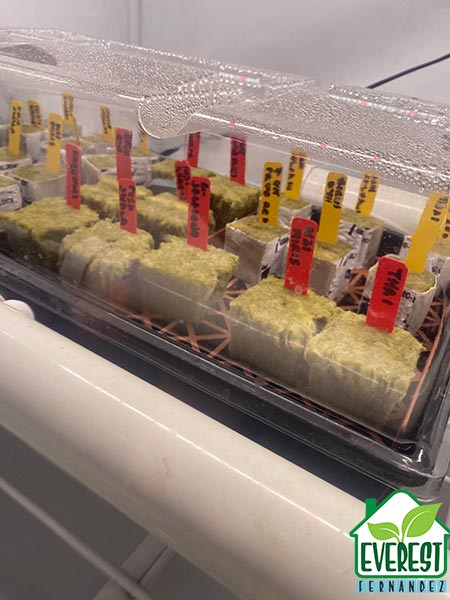
- Lighting Transition: Gradually increase the light intensity. I typically adjust my dimmers on my 2 x 100W Daylight LED bars to push PPFD levels to around 300–400 µmol/m²/s. They’re still only at 50% setting. At 100% they can reach upwards of 700 µmol/m²/s.
- Temperature Control: Aim for daytime temperatures in the range of 25–28°C (77–82°F), with evenings cooling slightly to around 20–22°C (64–68°F). I’ll let the nighttime temperatures drop a little lower when I want to steer them towards generative production.
- Humidity Management: Once the protective dome is fully removed (do so as iteratively as possible), I sustain a relative humidity of about 60–70% to ensure your plants remain stress-free. Sometimes, filling a Garland grow tray underneath the seedlings with a little water can help—as it does get quite arid in my region.
- Nutrient Solution: As soon as I can, I get my seedlings used to a slightly stronger hydroponic nutrient mix with an EC of 1.2 mS. Formulations like Plagron Hydro A+B with added CalMag work brilliantly when paired with zero-mineral RO water. I also use Ecothrive Trace—a micronutrient supplement—when feeding my plants dilute nutrient solutions like this.
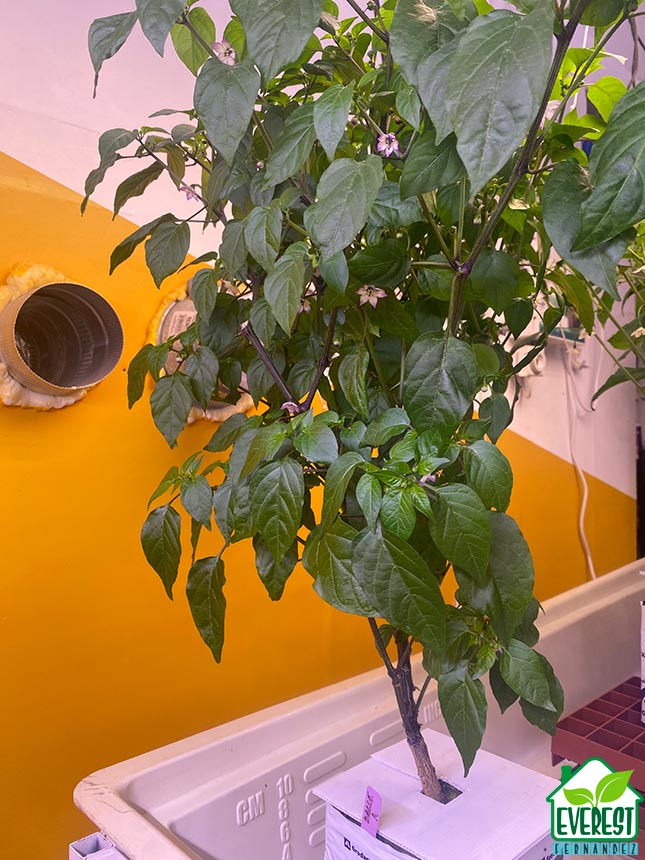
For clarity, here’s a quick-reference table outlining the light intensity at different growth stages:
| Growth Stage | PPFD (µmol/m²/s) | Lighting Duration |
| Germination | 150–200 | 16 hours (with 8 hours dark) |
| Early Transplantation | 300–400 | 16 hours (with 8 hours dark) |
| Flowering & Fruiting | 600–800 | 12–13 hours (adjustable) |
3. Flowering and Fruiting: The Real Magic
This is where the process truly becomes a dance of science and nature. Dalle Khursani is a short-season, high-yield cultivar that thrives under well-controlled conditions:
- Light Cycle: I find that 16 – 18 hours’ daylength during vegetative growth is great—especially for keeping the grow tent at a nice warm temperature. (Use tube heaters in the dark period.) Then I reduce to 12–13 hours when flowering begins. Chilies aren’t photoperiodic, but the shorter days, coupled with higher light intensity, helps steer them into generative production.
- Increased Light Intensity: When buds start to form, I go all out for light intensity, boosting the PPFD to between 600–800 µmol/m²/s or higher to encourage abundant fruit set. At this point I remove any lower leaves that aren’t receiving much light to help the plant to focus its energies.
- Nutrient Adjustments: I raise the EC to 1.8–2.5 mS—reducing the amount of base nutrient and making up the rest by adding a phosphorus and potassium (PK) boost to support fruit development.
- Climate Considerations: Lower humidity to 50–60% to mitigate fungal risks, and ensure ample airflow using oscillating fans and a 4-inch extraction system.
- Plant Management: Since these plants can stretch up to 1.5 metres indoors, early topping to promote branching can be a good idea. Staking sometimes becomes necessary once the fruits start accumulating on the branches.
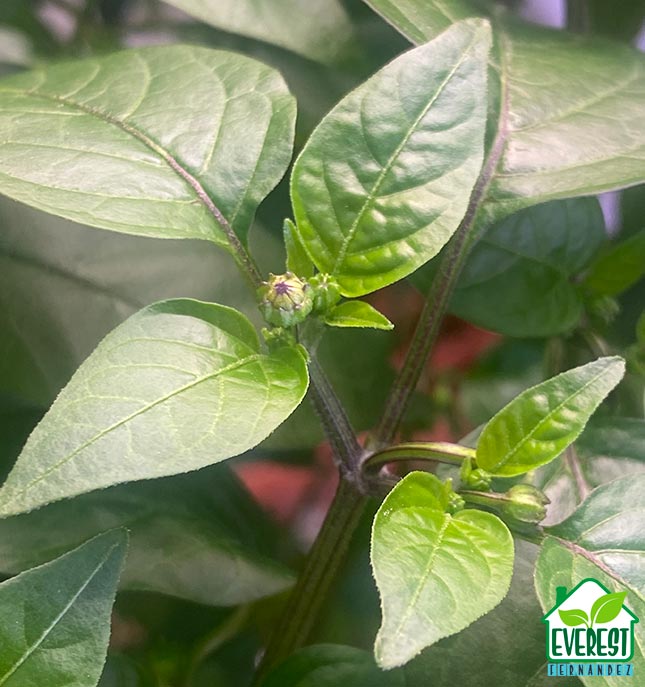
4. Harvesting and Seed Production
Approximately 90–100 days after transplanting, your Dalle Khursani should be ripe for harvest. Look for these signs:
- Colour and Texture: The fruits should turn a vibrant red and exhibit a firm texture.
- Ease of Detachment: Ripe pods will detach effortlessly when twisted.
- Seed Quality: For seed production, choose only the best fruits from the healthiest plants. The seeds should be creamy-white and well-formed.
5. Common Cultivation Problems
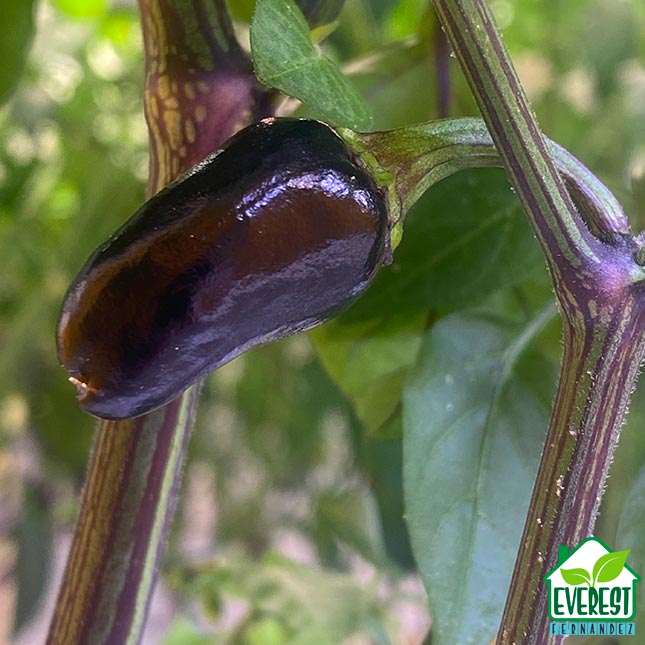
Even with optimal conditions, challenges can arise.
- Slow Germination: Typically, the propagation medium is not warm enough. Try a heat mat or tube heaters. A small grow tent can make increasing air temperatures much easier (and more energy efficient than trying to heat a whole room.) Keep media moist but not sodden.
- Nutrient Imbalances: Regular monitoring of EC and pH is essential. Dalle Khursani’s unique capsaicin dynamics mean that slight variations might have noticeable effects.
- Environmental Stress: Keep a watchful eye for sudden temperature drops or poor ventilation, which can lead to leaf curl or reduced fruit set.
Why Grow Dalle Khursani Indoors?
Dalle Khursani isn’t just another chilli—it’s a culinary and horticultural marvel that marries tradition with technology. Its balanced heat, which starts with an electrifying punch and mellows into a gentle, caressing warmth, makes it a standout ingredient in both modern and traditional recipes. For those in the UK and across Europe, where authentic Himalayan chillies are rare treasures, cultivating this GI-protected variety hydroponically offers a unique opportunity to enjoy its fiery brilliance year-round.
- A Culinary Masterpiece: Its nuanced heat and flavour profile not only enhance dishes but also serve as a fascinating conversation starter.
- Premium Seed Production: I grow my own Dalle Khursani for culinary purposes, to make my neighbour Raj smile (it’s the most wonderful sight!), and to produce the highest-quality seeds, which I’m now starting to sell in limited quantities!
- Optimised Hydroponics: With the precision control afforded by hydroponics, every aspect of its growth can be fine-tuned, ensuring a consistently high-quality yield.
Dalle Khursani epitomises the perfect blend of ancient culinary heritage and cutting-edge growing techniques. Its fascinating history, intricate flavour profile and demanding yet rewarding cultivation requirements make it a true gem for any serious grower. Embrace the challenge, refine your approach, and discover why this Himalayan fireball continues to enchant both culinary aficionados and hydroponic enthusiasts alike.
For those ready to embark on this fiery journey or interested in acquiring premium “Dalle Khursani” seeds (grown in an optimised and controlled environment in France), do not hesitate to reach out.
Leave a Reply